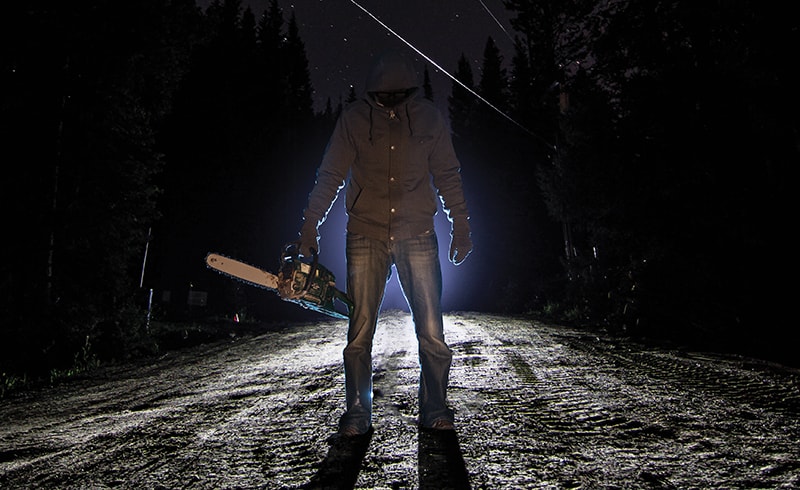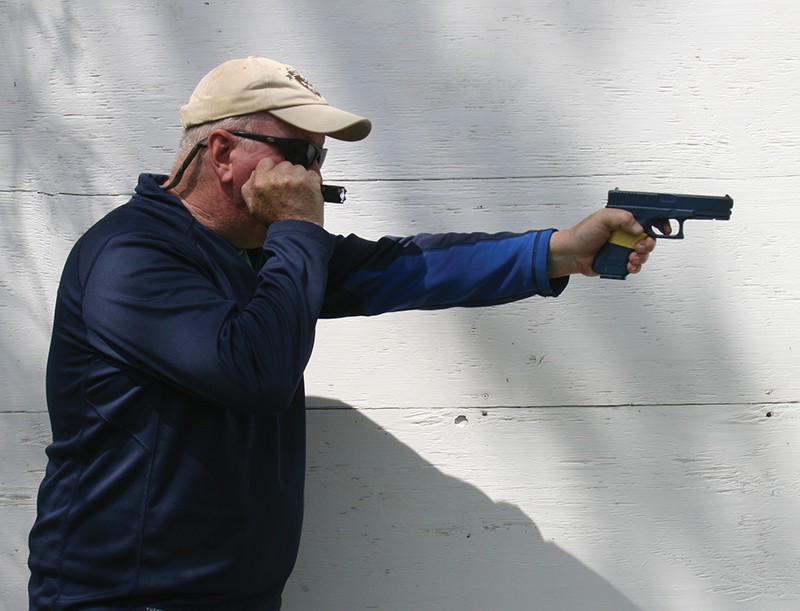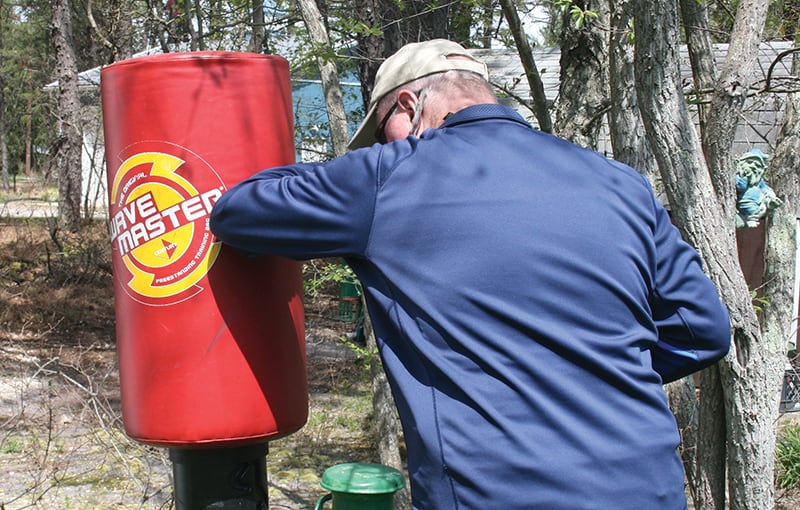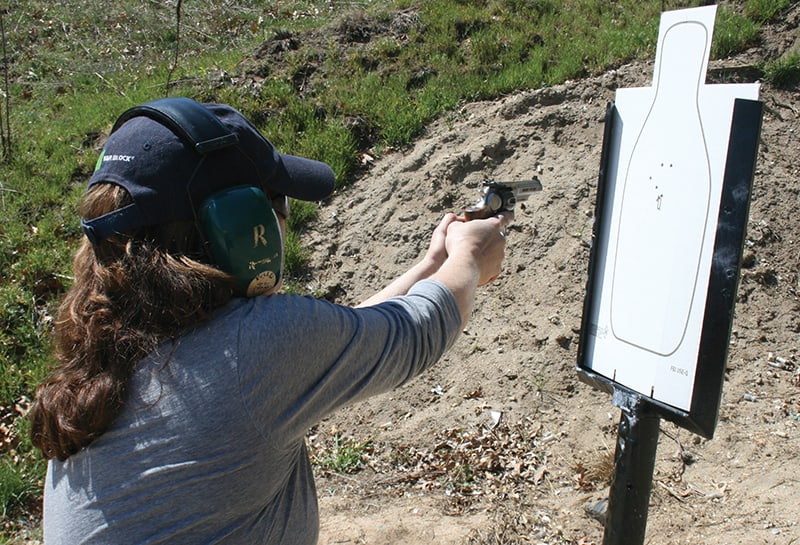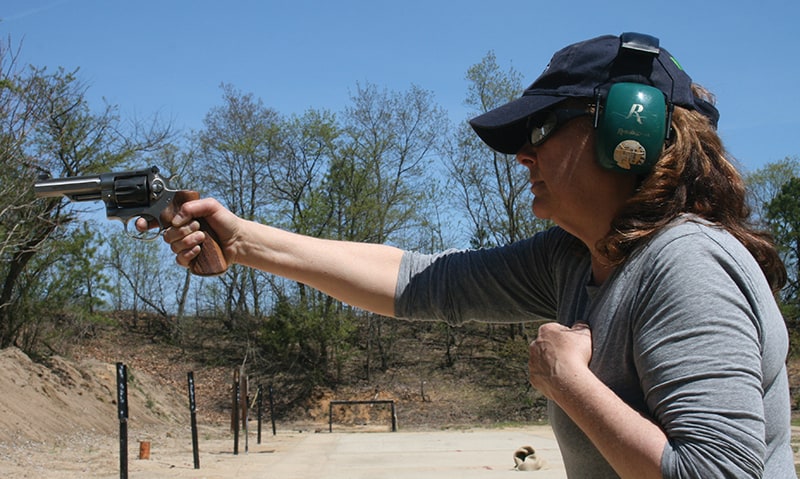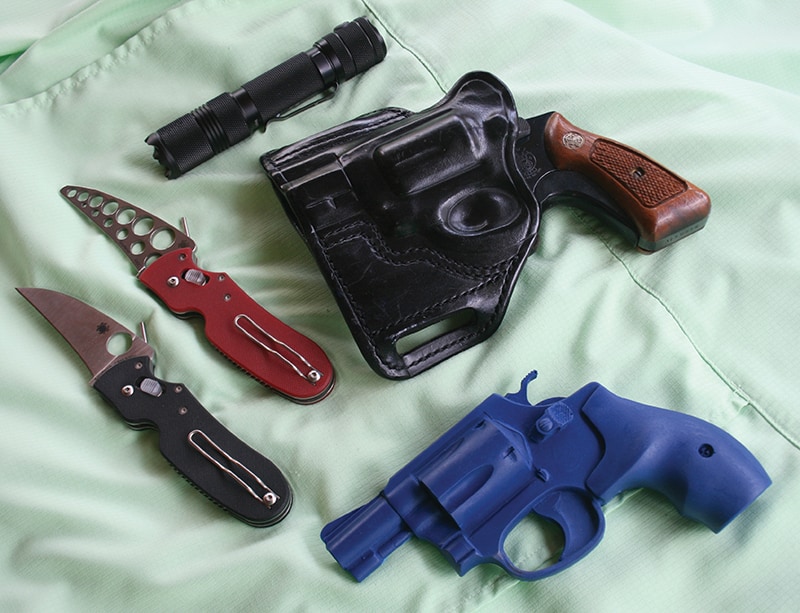Close Dark Fast
Key words to keep in mind
when training for a violent encounter
At present, more than 40 states allow their citizens to carry a concealed firearm. Despite what critics have predicted, the streets have not run red with blood. On the contrary, there have been numerous instances where responsible citizens have used a firearm to protect their lives or loved ones.
Having ready access to a firearm is certainly a good first step toward ensuring your personal safety. Once you’ve acquired it, the next step is learning how to use it. If you’re serious about defending your life, you need to take in some professional training. There are many high-profile shooting schools offering cutting-edge training. Unfortunately, attending such a class is often outside the realm of possibility for many folks because of the expense and travel requirements. The good news? There are probably some very capable instructors in your area who can get you up to speed at a fraction of the cost of the big name schools. Training is a perishable skill, and from time to time you have to sharpen the saw. So frequent “maintenance intervals” are part of the picture.
As a career law-enforcement trainer, I’ve noted many similarities between assaults involving weapons, as well as those without. Events studied include attacks on both law enforcement officers as well as other citizens. I regularly use data from definitive sources such as the DEA, FBI, and New York City Police Department in my training to better prepare officers in my agency. Many of those same lessons would serve the armed citizen equally well. Are patterns of assault on non-law enforcement much different? Not really. Just check out the “Armed Citizen” section of American Rifleman.
Typically, the bad guys will try to have things working in their favor before launching a violent attack and the element of surprise is high on their list of priorities. In a great many instances, prevailing conditions can be best described as close, dark and fast.
Condition 1: Close
Unlike the make-believe scenarios we see on the silver screen, most real-life gunplay takes place in very close quarters. There is indeed a common thread between armed assaults, verbal disputes with your significant other and an altercation you had with the schoolyard bully back in the 6th grade. These things tend to unfold at what we would categorize as “conversational distance.” This dynamic is especially true in events involving non-law enforcement personnel where the assailant has targeted someone as a potential victim.
Recently, I had the opportunity to review the firearms discharge report of a big city police department. In one recent year, officers engaged armed criminals in 15 separate incidents. Only one took place at a distance of greater than 5 yards. Should an armed citizen have to resort to a firearm, the most likely scenario is the assailant will invade your personal space in order to appear more intimidating. Often they will attempt to get you off guard by asking for the time or directions.
Your assailant may have a weapon other than a firearm, such as a knife or bludgeon which require proximity to bring it into play. Recognize such weapons are equally deadly as any gun inside of arm’s length. Extremely close-quarter attacks can be very difficult to defend against because there is little time to react to the assailant’s actions. In many instances, an initial reaction with your firearm is not possible and may not even be the best course of action. Stay switched on. Be wary of people who want to get close to you for no apparent reason.
Condition 2: Dark
Most violent crime takes place during the evening hours. If you are targeted to be a victim of violent crime, more than likely light conditions will be poor.
When our vision is compromised due to darkness, our performance is handicapped in any number of ways. Simple tasks become complicated and our ability to make sound decisions is at a deficit. Even simple navigation in unfamiliar surroundings can be problematic. Should something go bump in the night, we first have to locate it and then quickly decide whether or not it poses a threat. This can be a piece of cake in bright light, but not so easy in the dark.
Darkness affords bad guys the opportunity to conceal their true intentions and hide weapons. They’ve already formulated a plan of what they want to do and are simply waiting for the right time to put it into action. While countering an attack in low light can seem like a daunting task, it can be done. The best strategy is to deny your opponent the chance.
Although many attacks occur in very close quarters, a small tactical flashlight is an indispensable tool. It can help you spot danger, help you sort out the good guys from the bad guys, and serve as a less-lethal weapon. By all means, get familiar with a flashlight-assisted shooting technique. For close-quarters shooting, I feel very well served by the Neck Index technique (see photo).
Condition 3: Fast
Most violent street attacks are over in a matter of seconds. This is especially true if weapons are involved. Certainly a high-capacity pistol provides some comfort should your world turn upside down, but the bottom line is you’re more likely to run out of time than bullets.
Our daily routine places us in close proximity to all sorts of people on the street, the checkout line, or on mass transit. Unless you live the life of a hermit, this is a reality of modern living. In close quarters, a surprise attack even by an untrained individual will be difficult to counter and time and time again it has been proven action beats re-action.
High on my list of precautions would be to avoid stupid places, hanging out with stupid people, and doing stupid things. This alone can spare you a world of grief.
Practice With A Purpose
In order for training to be valid, it must meet the challenge of the anticipated encounter. Think close, dark and fast. To make yourself as hard a target as possible will require commitment, especially when you balance it against the demands of job and family.
Most of my live-fire training takes place at relatively short range. I like to mix both a one- and two-hand response against targets set to my left, right and behind me, as well as the classic “downrange” position. Real life bad guys are seldom arranged in a neat line downrange. Be sure your training includes drawing your handgun from concealment.
I recognize many public ranges don’t allow any sort of realistic practice. Humanoid targets, drawing from the holster and shooting “at speed” are not allowed. And shooting in the dark is totally off the table. But rest easy pilgrim and practice those basic marksmanship skills. There are other ways to address our concerns.
I strongly suggest going out and purchasing an inert training facsimile of your preferred carry gun. Ring’s Manufacturing of Melbourne, Florida, markets an extensive line of replica training guns. External dimensions are identical to the real deal and the trainers can be safely used to practice the draw stroke, flashlight-assisted shooting technique and tactical movement, as well as the transition from empty-hand defense to handgun. Best of all, you don’t need a range to work out with them.
By all means, get familiar with some basic empty-hand techniques. In a worst-case scenario, an attacker may have closed the distance and has denied you the opportunity to draw your firearm. In many street assaults, you may not be justified responding with deadly force.
Contrary to popular opinion, you don’t need to study the martial arts for years — or be in superb physical condition — to incorporate a few basic, but very effective, empty-hand techniques into your toolbox. Of course, the better trained you are in this area, the greater the odds of meeting with success. Being a one-dimensional “gun guy” represents only part of the picture.
Final Thoughts
While it might be impossible to predict the exact pattern of attack in every instance, we have a pretty good idea of the obstacles we might be facing. Hopefully, you’ve taken steps to tip the odds in your favor. Regular practice is essential, but it doesn’t have to take the form of a trip to the range. Dry firing and practicing the draw stroke can all be done in the comfort of your home (empty gun — check it twice). Likewise, we can practice getting a flashlight into action with the inert training gun. If you can find a training partner to refine some of those skills, so much the better. Again, the inert training gun is just the ticket.
Success in a close-quarters armed conflict requires a bit of skill with empty hands and the gun, as well as a winner’s mindset. Clearly, this multi-dimensional approach gives you the best chance to prevail. Do something fast, do something as hard as you can. The last thing your assailant expects is a sudden, violent counterattack.

